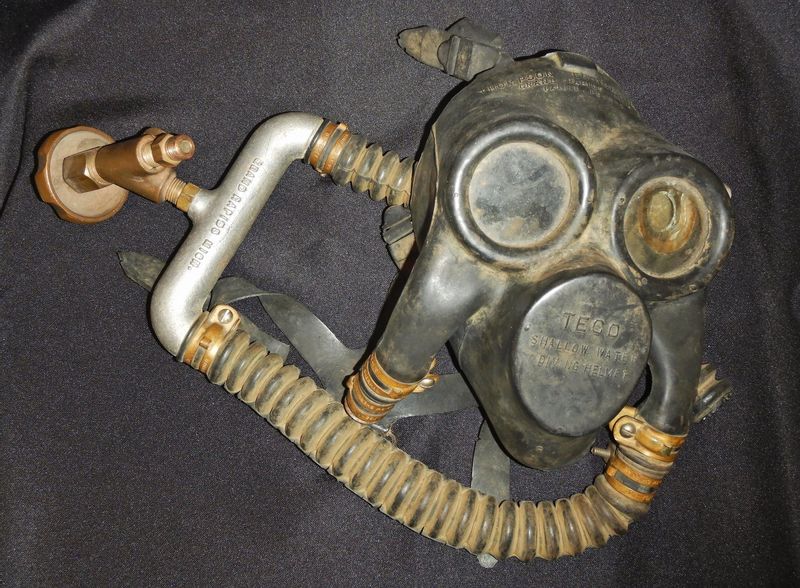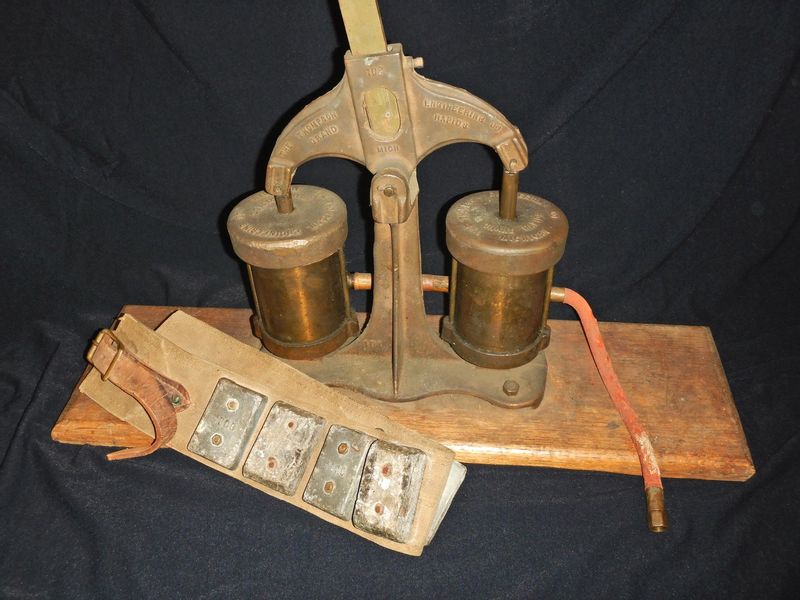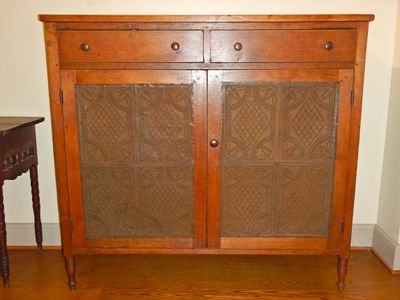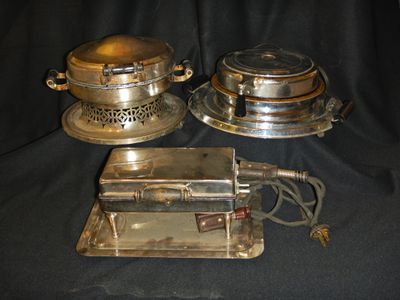1940S DIVING GEAR, BENJAMIN LEROY, AND TVA DAMS
Last Updated 2/13/2024
By JUBILIEE P. REID

Original Publish Date: August 5, 2023
In the Business and Industry Exhibit at the McMinn County Living Heritage Museum are multiple pieces of WWII era diving equipment. These were used at Fontana Dam, in Western North Carolina, and Guntersville Dam, in Northern Alabama.
The diving mask was manufactured by the Thompson Engineering Company (TECO) of Grand Rapids, Michigan and has “TECO Shallow Water Diving Helmet” imprinted into the nosepiece. Although it is labeled as a helmet, these are usually referred to as diving masks. These rubber masks were originally designed from gas masks and replaced brass and copper helmets formerly used for shallow water diving. Rubber masks were preferable to metal helmets as they provided a much larger range of motion. The exhibited mask has twin air hoses; the original air control valve is attached. Few rubber masks from this era are still in existence due to the relatively short life span of the rubber.
Another piece of the diving gear is a canvas weight belt manufactured by TECO which has six rectangular lead weights attached to it. This belt was used to counteract buoyancy while diving. There is also an air reservoir tank and a two-cylinder, hand operated, lever pump used for supplying the diver with oxygen. Stamped into the metal pump are the words, “The Thompson Engineering Co. Grand Rapids, Michigan” along with the number 102. These pumps would be operated by one or two people on the surface and were generally rated for diving less than 40 feet.
The museum’s gear was used by Benjamin Hodge LeRoy (May 23, 1909 – Mar. 22, 1977), a resident of Bridgeport, Alabama and was donated to the museum by his son, Louie LeRoy. Benjamin was the son of William Lafayette LeRoy (1876 – 1963) and Ann Raulston (1874 – 1938). Benjamin traveled to be involved in the construction of at least three TVA dams. In his later years, he moved to Maryville, TN where he lived for the remainder of his life. He was buried at the Mount Carmel Cemetery in Bridgeport, Alabama.
On May 7, 1940, the U.S. census was taken at the TVA barracks in Marshall County, Kentucky. Benjamin LeRoy is listed as an ironworker for a TVA dam and as a “wage or salary worker in government work”. This undeniably means he was involved in the construction of Kentucky Dam which was being built in Marshall County at this time. Kentucky Dam was built from 1938 to 1944 and at 8,422 feet is the longest TVA dam. This census lists him as a 30-year-old single man having only completed an 8th grade education. It says he was born in Colbert County, Alabama and received $2,460 for working 52 weeks in 1939.

Fontana Dam, where the museum’s diving gear was used, is one of the largest dams operated by the TVA. Congress approved funding for this expensive undertaking on December 17, 1941, only ten days after the bombing of Pearl Harbor. Construction began January 2, 1942. The site for Fontana Dam was 35 miles from the nearest community so a bridge and 10 miles of road had to be built to connect the dam site with existing highways. A two-mile spur of track was constructed off the main railroad to transport equipment and supplies which were shipped from many states. A camp south of the construction site housed 3,000 workers, and many more resided with their families in a village two miles away. The laborers worked in three shifts, seven days a week. It was completed on November 11, 1944. Although it wasn’t operating until late in the war, Fontana was considered crucial since it produced 228,000 kilowatts of power annually, much of which was used for aluminum production for the war effort. Standing at 480 feet, it is currently the tallest dam east of the Rocky Mountains. At completion, it was the fourth tallest dam in the world. Fontana Dam spans 2,365 feet across the Little Tennessee River and was TVA’s largest project during the war.
Guntersville Dam, an hour’s drive from Benjamin’s hometown of Bridgeport, crosses the Tennessee River 10 miles downstream of Guntersville, Alabama. Construction lasted from December 4, 1935 to January 24, 1939. Though 1,614 feet wider than Fontana, Guntersville is only 94 feet tall. Most of the 3,500 workers for this project were chosen from within a 60-mile radius of the construction site. Guntersville Dam produces roughly 140,400 kilowatts of electricity annually. Guntersville was less important to the war effort and was built more for hydroelectric power and to improve river navigation.
The museum’s antique diving gear, used in construction of these important dams, are intriguing pieces of history from the bygone era of large federal dams.










